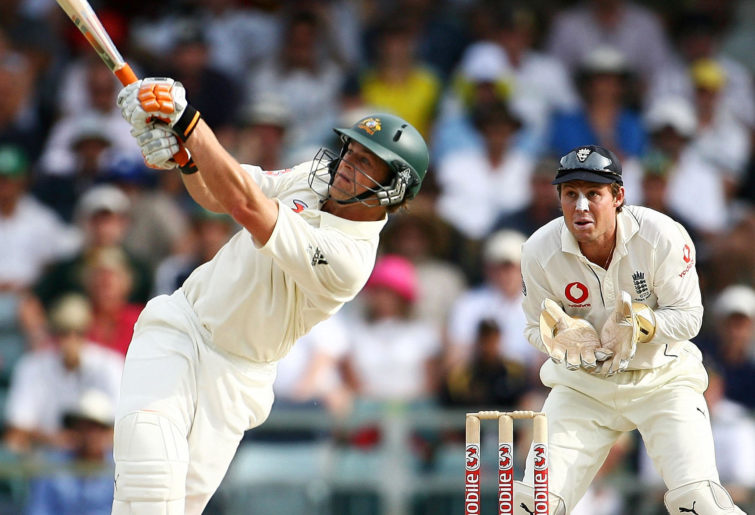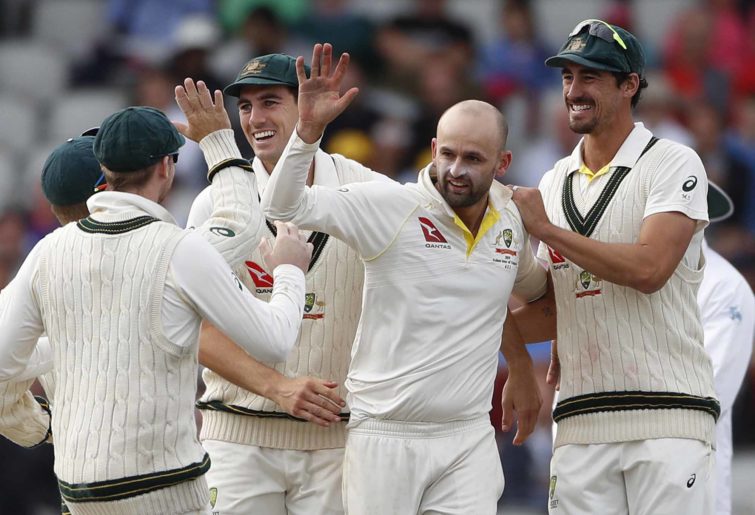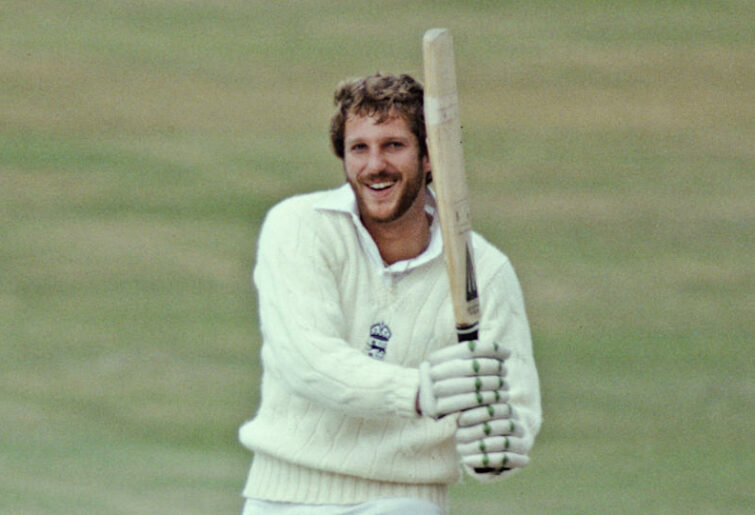World Cup chances up in the air but Smith makes Major call on T20 future, Green dumped despite huge IPL deal
Test great Steve Smith is to play for Washington Freedom in the second season of Major League Cricket as the Australian influence in the…
Opinion
Following the initial Calendar Ashes article between teams of October-born players, the November equivalent will take place at the WACA ground.
If I could watch only one of these 12 matches, then I’d cross the country to see this one.
This Australian side includes many legendary players, who collectively have played more than 600 Tests, taken almost 1200 wickets, and scored 67 centuries. While omitting some all-time greats, it boasts three famous West Australians. England’s team is similarly experienced and capable.
Team selections support the Relative Age Effect theory, with the home side in particular having a large pool of eligible players from which to draw.
However, the visitors have enjoyed little success at the WACA to date. In 14 Tests commencing in 1970-71, they have achieved just one win and three draws. In those matches, Australia has averaged 38.65 runs per wicket scored at a fast rate of 3.23 runs per over, compared to England’s 27.25 and 2.79 respectively. That’s equivalent to a victory margin of 228 runs, or six wickets.
But on the plus side, only one member of this England team has ever lost there.
Victor Trumper
48 Tests, 1899-1912, 3163 runs at 39.04, eight centuries
A batting genius adored by spectators, and known for his skill on rain-affected uncovered pitches. George Beldam’s posed photograph of him jumping out to drive is iconic. Many experts declared him the greatest batsman that he had ever seen. In his second Test, he scored 135 not out at Lord’s. In Australia’s three-run win at Old Trafford in 1902, he scored a century before lunch on a wet pitch. Against England in 1903-04, he scored 574 runs at 63.77. Against South Africa in 1910-11, he scored 662 runs at 94.57. After years of ill health, he died at the age of 37.
Colin McDonald
47 Tests, 1952-1961, 3107 runs at 39.32, five centuries
Successfully faced the fast bowling of Fred Trueman and Brian Statham, Neil Adcock and Peter Heine, and Wes Hall, as well as the spin of Jim Laker and Tony Lock. In Australia, he averaged 47.66. When Laker took 19-90 at Old Trafford in 1956, he scored 32 out of 84, and then 89 out of 205. Against England in 1958-59, he scored 519 runs at 64.87, with two centuries.
Justin Langer
105 Tests, 1993-2007, 7696 runs at 45.27, 23 centuries
Left-hander who learned his trade at the WACA. Scored 1481 runs in 2004, including one of his three double-centuries. Other highlights included a match-winning 127 with November teammate Adam Gilchrist against Pakistan at Bellerive Oval in 1990-00. He emerged with credit from the Ashes series loss of 2005, with 394 runs at 43.77.

(David Davies/PA via AP)
Joe Darling
34 Tests, 1894-1905, 1657 runs at 28.56, three centuries
Left-hander and inspiring captain, who led three Ashes tours. Farming delayed his first-class debut until the age of 23. Against England in 1897-98, he scored 537 runs at 67.12, with three centuries.
Percy “Greatheart” McDonnell
19 Tests, 1880-1888, 950 runs at 28.78, three centuries
Attacking batsman who excelled on wet pitches, and captained Australia in three series. At the SCG in 1881-82, he scored a match-winning 147. Later he scored 103, 124 and 83 in successive innings in 1884. Series figures included 302 runs at 50.33 in 1881-82, and 230 runs at 57.50 in 1884-85. He died at the age of 35, after a long illness.
Keith “Nugget” Miller (captain)
55 Tests, 1946-1956, 2958 runs at 36.97, seven centuries, 170 wickets at 22.97
A born leader, who never captained Australia with Don Bradman as the ACB’s chairman, but will in this match. Classical batsman, fiery pace bowler, fighter pilot, VFL player for St Kilda, and film-star looks. On the Invincibles’ tour, he shared the new ball with Ray Lindwall. He scored 181 on first-class debut, but then lost his peak years to war service. Against England in 1946-47, he scored 384 runs at 76.80, and took 16 wickets at 20.87. Then in 1950-51, he scored 350 runs at 43.75, and took 17 wickets at 17.70. In 1954-55 in the West Indies, he scored three centuries. At Lord’s in 1956, at the age of 36, he took 5-72 and 5-80 to set up victory.
Adam Gilchrist (wicketkeeper)
96 Tests, 1999-2008, 5570 runs at 47.60, 17 centuries, 379 catches, 37 stumpings
Redefined the role, scoring at a rate of 81.95 runs per 100 balls, and averaging above 50.00 for much of his career.

(Photo by Paul Kane/Getty Images)
Batting highlights included 149 not out against Pakistan in 1999-00, an undefeated 204 against South Africa in 2001-02, and a 57-ball century against England at the WACA in 2006-07. Keeping highlights in Ashes series included 26 dismissals in 2001, 25 in 2002-03, and 26 in 2006-07. He captained Australia to a series win in India in 2004-05. A Sandgroper via New South Wales, who has kept (pun intended) Rod Marsh out of this team.
Mitchell Johnson
73 Tests, 2007-2015, 2065 runs at 22.20, one century, 313 wickets at 28.40
An intimidating left-arm fast bowler, unplayable at his best. Against England and South Africa in 2013-14, he took 59 wickets at 15.23 in only eight Tests. He was also successful against South Africa in 2008-09, taking 33 wickets in six matches, and scoring an undefeated 123 at Cape Town. Another West Australian, this time via Queensland.
Merv Hughes
53 Tests, 1985-1994, 212 wickets at 28.38
Big-hearted fast bowler capable of regular long spells, and a crowd favourite. His WACA highlight was 13-217 from 73.1 overs against the West Indies in 1988-89, including a hat trick, after new-ball partner Geoff Lawson suffered a broken jaw while batting. In the same series, he scored 72 at the Adelaide Oval. In England in 1993, he bowled 296.2 overs to take 31 wickets at 27.25, spearheading a 4-1 victory. Shades Brett Lee for a place in this team.
Nathan Lyon
96 Tests, 2011-, 390 wickets at 31.58
Off-spinner who took 5-34 in Sri Lanka on debut, including Kumar Sangakkara’s wicket with his first delivery. Match highlights include 12-286 against India in 2014-15, 13-154 against Bangladesh in 2017-18, and 10-118 against New Zealand in 2019-20.

(AP Photo/Rui Vieira)
Charles “Terror” Turner
17 Tests, 1887-1895, 101 wickets at 16.53
November opposing captain Stanley Jackson described him as the best medium-paced bowler he ever faced. He broke the ball both ways, and formed an unplayable combination with Jack Ferris. On their debut together at the SCG, he took 6-15 in England’s total of 45. At the SCG in 1887-88, he took 12-87. At Lord’s in 1888, he took 10-63. Has the lowest bowling average of any Australian with 100 wickets. He will complement this team’s pace trio perfectly, bowling long spells when required or conditions suit.
Honourable mentions: Phil Hughes, Graeme Wood, Bruce Laird, Rod Marsh, Brett Lee, Peter Siddle.
Herbert Sutcliffe
54 Tests, 1924-1935, 4555 runs at 60.73, 16 centuries
One of the greatest of opening batsmen, with the hook shot a strength. He averaged 66.85 against Australia, with six centuries in 14 Tests in Australia alone. He formed an outstanding combination with Jack Hobbs, with whom he added 157 and 100 in their first Ashes Test together, and 283 in the next one. In that series, he scored 734 runs at 81.55. In 1930, he scored 436 runs at 87.20. His first-class debut was delayed by World War One, until the age of 24.
Bobby “The Guv’nor” Abel
13 Tests, 1888-1902, 744 runs at 37.20, two centuries
Only five-foot-four high, he was strong off the back foot and on the on side, and a useful slip fieldsman. He was the first Englishman to carry his bat, with 132 not out at the SCG in 1891-92. He scored 2000 runs in a county season for eight consecutive years.
Johnny Tyldesley
31 Tests, 1899-1909, 1661 runs at 30.75, four centuries
Quick-footed attacking batsman who generally batted at first drop, and a fine outfielder. Ashes highlights included 138 at Edgbaston in 1902, 100 at Headingley and 112 not out at the Oval in 1905. In first-class cricket, he scored 86 centuries.
Ken Barrington
82 Tests, 1955-1968, 6806 runs at 58.67, 20 centuries, 29 wickets at 44.82
Powerful stroke-maker and dependable fielder. Averaged 69.73 in Australia with four centuries, and also scored 256 against Australia at Old Trafford in 1964. On his two tours he scored 582 runs at 72.75 in 1962-63, and 464 runs at 66.28 in 1965-66. He retired after suffering a heart attack, while playing a match in Australia. He subsequently served as an England selector, and died mid-Test of a heart attack while assistant manager of England’s 1981 tour to the West Indies.
Sir Stanley “Jacker” Jackson (captain)
20 Tests, 1893-1905, 1415 runs at 48.79, five centuries, 24 wickets at 33.29
Graceful batsman and fast-medium bowler. In his first two Tests, he scored 91 and 103. The 1905 season was known as Jackson’s year after he led England to a series victory, won all five tosses, and topped both the batting and bowling averages with 492 runs at 70.28 including two centuries and 13 wickets at 15.46. He was fagmaster of Winston Churchill at Harrow. His career was interrupted by service in the Boer War. Subsequently he was a member of parliament, Governor of Bengal, chairman of the Conservative Party, president of the MCC, and chairman of England selectors.
Eddie Paynter
20 Tests, 1931-1939, 1540 runs at 59.23, four centuries
Left-hander with perfect temperament for a crisis, and a fine outfielder. He averaged 84.42 against Australia in seven Tests. In 1938, he scored 216 not out at Trent Bridge, and averaged 101.75. In South Africa in 1938-39, he scored 653 runs at 81.62, with three centuries including 243 at Durban. He did not make his first-class debut until the age of 25, or score a century until 30.
Sir Ian Botham
102 Tests, 1977-1992, 5200 runs at 33.54, 14 centuries, 383 wickets at 28.40
Aggressive batsman and swing bowler, and one of the finest all-rounders of all time. In Mumbai in 1980, he scored 114, and took 6-58 and 7-48. Ashes-winning deeds in 1981 included 5-11 at Edgbaston, 149 not out at Headingley and 118 at Old Trafford, each faster than a run a ball. He was averaging 38.80 with the bat and 23.06 with the ball at the halfway point of his career, his 51st Test in 1982, but performances declined thereafter. He is the only member of this team to have played a Test at the WACA, with four appearances for only one loss.

(Photo by Adrian Murrell/Allsport/Getty Images/Hulton Archive)
Billy Bates
15 Tests, 1882-1887, 656 runs at 27.33, 50 wickets at 16.42
Cavalier batsman, good enough to sometimes open the innings. Slow bowler who took 7-28 and 7-74 at the MCG in 1882-83, including the first hat trick by an Englishman. He played all of his Tests in Australia. His career ended when he was struck in the eye by a straight drive while bowling in a net session at the MCG.
Arthur “Dick” Lilley (wicketkeeper)
35 Tests, 1896-1909, 903 runs at 20.52, 70 catches, 22 stumpings
First-choice wicketkeeper for 13 years, and toured Australia twice. In first-class cricket, he scored 16 centuries and made 705 catches and 200 stumpings.
Harold Larwood
21 Tests, 1926-1933, 485 runs at 19.40, 78 wickets at 28.35
Exceptionally fast bowler best known for role in the Bodyline series, and for his accuracy. In that series, his fourth Ashes contest, he took 33 wickets at 19.51, scored 98 as a nightwatchman, injured numerous batsmen, and spearheaded a 4-1 victory. His last appearance in Test cricket, at 28 years of age, after later refusing to sign a letter of apology for employing his captain Douglas Jardine’s tactics. He played a tour match at the WACA in 1928-29, more than 40 years before the ground’s first Test match. He, his wife and five daughters migrated to Australia in 1950.
Andy Caddick
62 Tests, 1993-2003, 234 wickets at 29.91
Tall, fast-medium New Zealand-born bowler with a Richard Hadlee-like action, whose performances ranged from destructive to mediocre. Against Australia, he took 64 wickets in 18 appearances, but at an average of 40.00. Against Australia in 1997, he took 24 wickets at 26.41. Toured Australia only in 2002-03, where after three poor Tests and non-selection for the WACA match, he took 3-121 and 7-94 in the consolation victory at the SCG. It would prove to be the last Test that he ever played.
Possible tour party members: Tim Robinson, Gary Ballance, Ken Shuttleworth, Fred Titmus, Roly Jenkins.
Next comes the third Test at the Melbourne Cricket Ground, commencing – naturally – on Boxing Day.